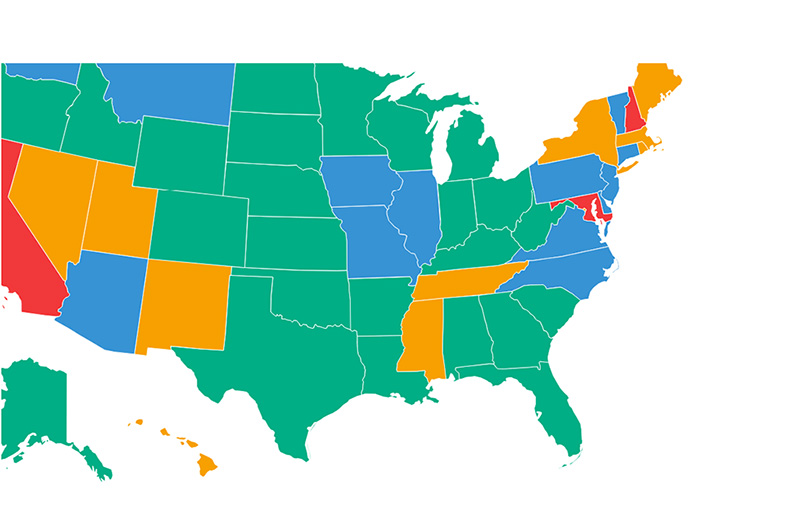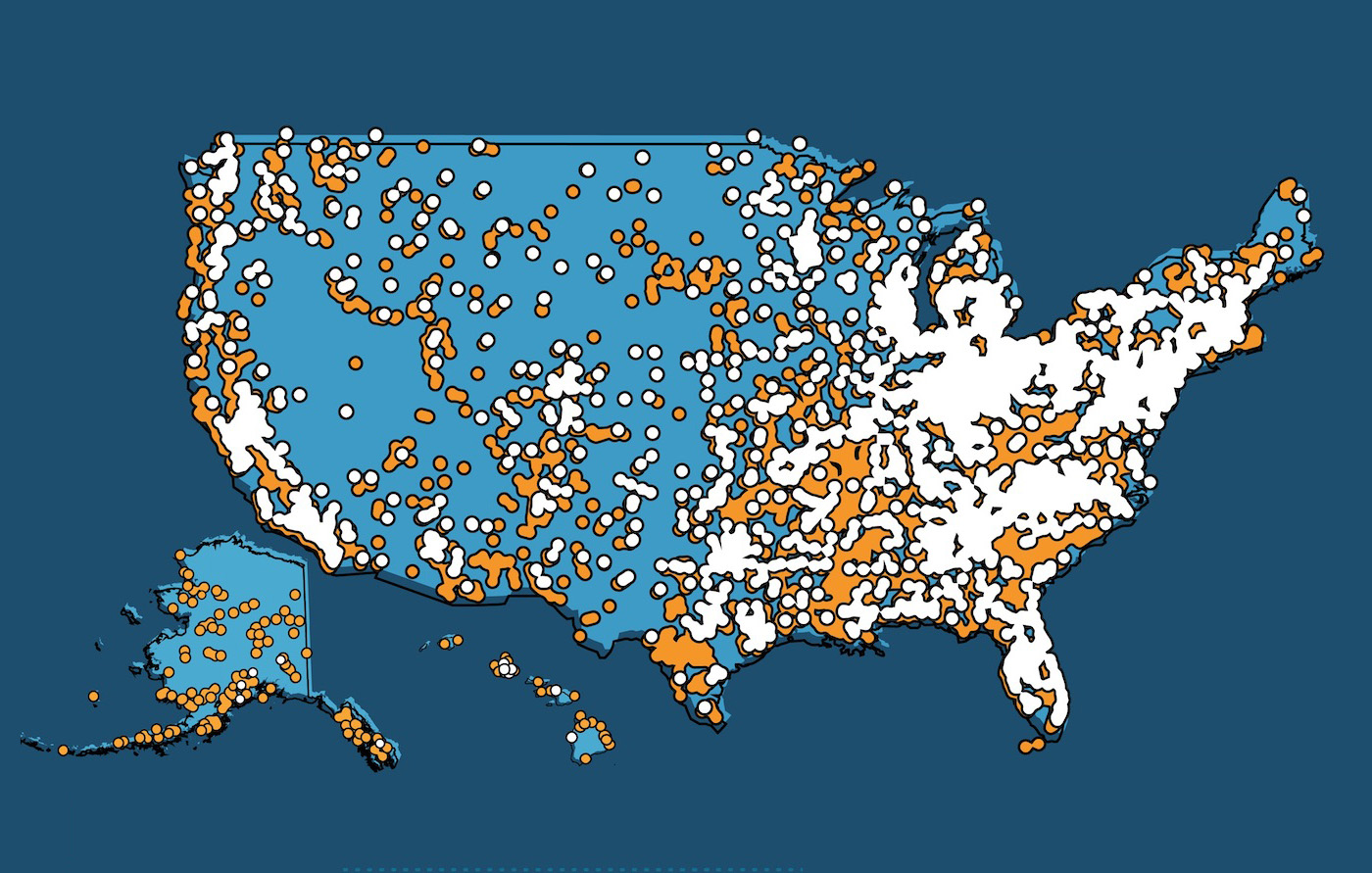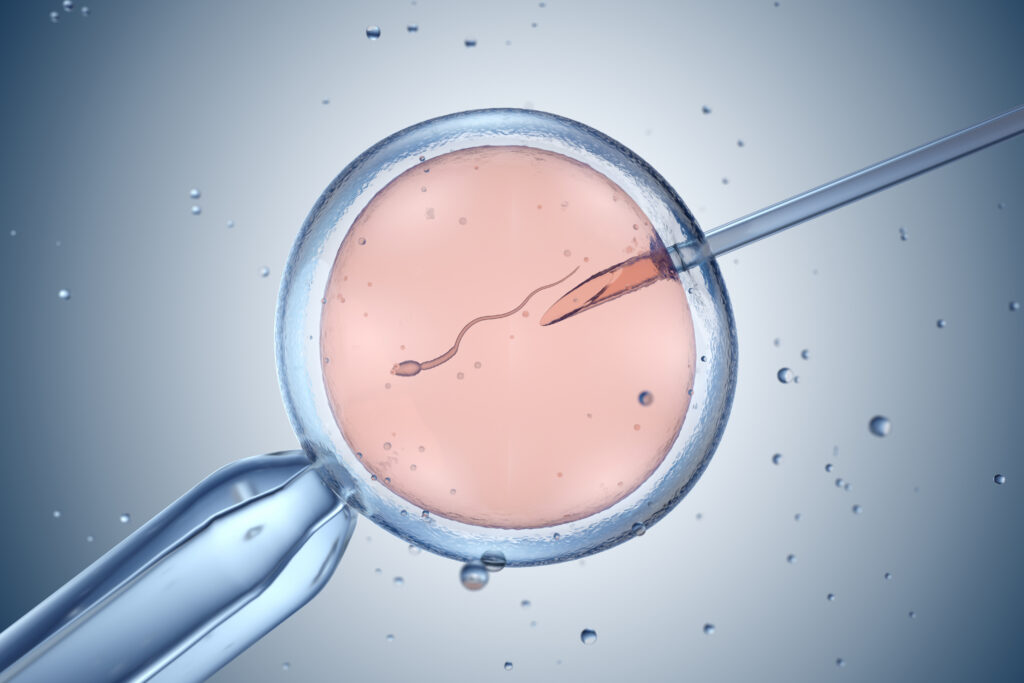Why We Need Federal Limits on Late Abortion to Protect Both Mother and Child
This is Issue 97 of the On Point Series.
Most on the left vehemently oppose any legislative limits on abortion, and some on the right, even if they identify as pro-life, are of the opinion that a federal limit on late abortions would fail to find consensus and so could not be passed. Neither position is tenable in light of the evidence that limits on late abortion are needed for both women and their unborn children, and that popular support exists for such limits.[1]
Is it true that federal limits on late abortion could not find consensus?
Polls document that 72% of Americans agree with limiting abortion to no later than 15 weeks, so there appears to be broad public consensus supporting limits. Only 10% agree with the radical position of abortion on demand for any reason at any time in pregnancy.[2] The U.S. is in the minority with its hyper-permissive abortion policy: we are one of very few countries allowing elective abortion in the second half of pregnancy, in the same camp as North Korea and China.[3] This is surprising, given how extensively the humanity of unborn children has been documented. At 15 weeks’ gestation they have all their major organs, a beating heart, and suck their thumb (even demonstrating whether they are right- or left-handed based on their preference visualized on ultrasound). At this same stage, they respond to touch, taste, and pain, and some have been successfully operated upon in utero to correct defects.[4]
How often do late abortions occur?
Over the past 10 years, the CDC reports that between 7.5 and 9.2% of abortions performed annually were after 13 weeks’ gestation, and approximately 1% were performed after 21 weeks’ gestation, when the child can often survive if separated from his or her mother.[5] However, CDC data is limited by voluntary state reporting. Some of the states that perform large numbers of late abortions, such as California and Maryland, refuse to provide data to the CDC. The Guttmacher Institute, which receives its information directly from abortion providers, consistently reports a significantly higher national abortion total, with nearly a million abortions performed in the U.S. each year; this suggests that around 10,000 abortions at 21 weeks of gestation or later are performed annually.[6]
What are the reasons for late abortions?
Most Americans assume that late abortions are performed for tragic reasons, such as threats to the life of the mother or severe fetal abnormalities. In reality, however, most late abortions are performed for the very same elective reasons that earlier abortions are obtained, and are often influenced by partner abandonment, coercion, and indecision. In one study, reasons given for late abortions included “not knowing about the pregnancy,” “trouble deciding about the abortion,” and “disagreeing about the abortion with the man involved.”[7] The same study, citing previous research, concluded that “data suggest that most women seeking later terminations are not doing so for reasons of fetal anomaly or life endangerment.” An additional study found that 50% of women having second-trimester abortions delayed the procedure due to indecision, 36% due to lack of awareness of whether they were pregnant or how far along they were, and 33% due to the difficulty of the decision.[8] Unasked by the researchers, but consistent with the frequently noted indecision and relationship difficulties, is the possibility that pressure toward abortion by the baby’s father may also motivate some of these late abortions. Nine months is a long time for a woman who desires her child to continue saying “no” to a coercive partner. We could protect many women from unwanted abortions if we prohibited late, elective abortions.
What about the “hard cases”?
Although few states document the reasons (though all should) for abortions reported, Florida and Utah do report this data. In 2021, Florida reported that only 12% of second trimester abortions were obtained to protect the life and health of the mother, address life-limiting fetal conditions, or intervene after rape and incest. Utah reported in 2021 that, of 254 abortions performed on resident women in the state in the second trimester or later, zero were due to rape or life endangerment and only 12 were due to fetal malformation. The vast majority of late abortions in these states—95% in Utah, and 88% in Florida—were either elective or performed for social, financial, other, or unstated reasons.[9] In fact, it is extremely rare for an obstetrician to perform an abortion to save a mother’s life. Life-threatening events usually occur in the second half of pregnancy, when the child can be separated from his or her mother by induction or cesarean section in an attempt to save both lives.[10] If an abortion is needed, however, every current state law protecting unborn human life allows an exception so that a physician may intervene in a life-threatening emergency. Undoubtedly, a federal limit would also include this exception.[11]
Do extremely late abortions really occur?
Doe v. Bolton, the companion case to Roe v. Wade, allowed abortion at any time in pregnancy if it would benefit the “health” of a woman, defined as any factor contributing to her “well-being,” encompassing physical, mental, emotional, familial, age, and social factors.[12] This allowed abortion to be justified at any time in pregnancy. CLI estimates, based on information collected and analyzed from ineedana.com, that there are 285 clinics, across 30 U.S. states, offering abortion at 15 weeks’ gestation or later. This includes 137 clinics that perform abortions through 20 weeks’ gestation, 120 through 24 weeks’ gestation, 23 through 28 weeks’ gestation, and five through 29 weeks’ gestation and later. Notorious Boulder, Colorado abortionist Warren Hern, in an interview with The Atlantic, confirmed that more than half of the dozen late abortions he performs weekly occur in healthy women with healthy babies.[13] Although 25 states have passed abortion restrictions in the year since the Supreme Court’s Dobbs v. Jackson Women’s Health decision, the remaining states have not implemented any restrictions, allowing extremely late abortions to continue up to the point of birth, for any reason.[14]
Can late abortions result in physical complications and death?
Late abortions are associated with a higher incidence of complications compared to earlier abortions,[15] due to the anatomical and physiologic changes that occur as the pregnancy advances. The increased amount of fetal and placental tissue requires a greater degree of cervical dilation, the increased blood flow predisposes to hemorrhage, and the relaxed uterine musculature is more subject to mechanical perforation. Moreover, due to the calcification of fetal bones after the first trimester, a dilation and evacuation (D&E) abortion requires stretching open a strong muscular cervix and dismembering the fetus by multiple passages of the surgeon’s instruments into the uterus, which could easily result in physical damage to a woman, even in experienced hands. The CDC has documented that the risk of maternal death from abortion increases by 38% for each additional week beyond eight weeks’ gestation, rising to a 76-fold higher risk of mortality in the late second trimester.[16] Women’s safety will benefit from limiting later, more dangerous abortions.
Can late abortions result in mental health complications?
Mental health complications have been documented to occur in many women following abortion, specifically resulting in higher risks of depression, anxiety, substance and alcohol abuse, and self-harm.[17] These mental health issues may then lead to “deaths of despair”: suicide, homicide, substance overdoses, and accidental deaths from high-risk-taking behavior. Such mental health deaths have been documented to occur six times as often in the year following abortion than following childbirth in European records-linkage studies. The U.S. abortion-related maternal mortality data, however, is known to be dramatically incomplete because the CDC relies primarily on death certificates, which often do not report a preceding abortion. Some subgroups of women are at particularly high risk of mental health complications, including those who obtain a coerced or unwanted abortion.[18] Sometimes abortion advocates argue that these women suffered from more mental health disorders prior to pregnancy and any subsequent mental health disorders were unrelated to the abortion. This argument has been undermined, however, by a recent records-linkage study documenting significantly greater increases in outpatient mental health visits, inpatient mental health hospitalizations, and longer inpatient mental health stays, following abortion than compared to childbirth. This was the case even though pre-pregnancy mental health diagnoses were more common in the childbirth cohort compared to the abortion cohort.[19]
Are infants ever born alive after a failed late abortion?
As the fetus grows, D&E becomes harder to perform due to the difficulty in eviscerating and disarticulating a larger fetus, so the abortionist will often perform an induction abortion late in pregnancy. To prevent a fetus from being born alive (which European studies have documented occurs more than half of the time in labor induction abortions[20]), the abortionist kills the fetus before labor induction. This is usually done with intraamniotic or intracardiac potassium chloride or digoxin injection, but entails additional risks to a woman if these potent cardiotoxic medications enter her bloodstream.[21] A recent survey of late abortion providers, however, documented that almost 70% do not routinely kill the fetus first,[22] so it is likely that many babies survive induction abortion and are actively or passively euthanized in unsupervised clinics. Additionally, compelling fetal neurologic research documents that pain perception begins as early as 12-15 weeks’ gestation, so these babies likely experience excruciating pain as they are killed.[23]
Conclusion
Despite the resistance of many who support abortion to any federal restrictions that would limit late, elective abortion procedures, most Americans support such limits. Many late abortions occur in the U.S. and almost all are obtained for elective financial or social reasons. Additionally, it has been documented that many of these abortions are obtained following coercion or indecision. Late abortions are more dangerous than early abortions and are associated with far higher rates of maternal mortality. Mental health complications are also documented more frequently following late abortions. Further, there are reasons to believe that infanticide does occur after failed late induction abortions, although due to lax oversight of abortion clinics these deaths usually remain unreported. Fetal neuroscience documents that pain does occur in fetuses killed in late abortions, and we should all consider this of added moral significance. Our country’s commitment to “choice” has led us to avert our attention from the scourge of late abortions, capable of causing physical complications, mental health harm, and death to women, causing painful deaths to members of our own species, and occasionally permitting infanticide. As a caring and just society, surely, we can reach a consensus to prevent these egregious ethical violations.
Ingrid Skop, M.D., F.A.C.O.G., is Vice President and Director of Medical Affairs for Charlotte Lozier Institute.
[1] Although no standard medical definition exists for “late abortion,” this discussion will consider “late abortions” to be those performed after the first trimester and “extremely late abortions” to be those performed after viability (late second trimester and third trimester).
[2] “Polling,” Susan B. Anthony Pro-Life America, accessed September 19, 2023, https://sbaprolife.org/polling.
[3] Angelina Baglini, “Gestational Limits on Abortion in the United States Compared to International Norms,” Lozier Institute, February 1, 2018, https://lozierinstitute.org/internationalabortionnorms/.
[4] Katrina Furth, “15 Facts at 15 weeks,” Lozier Institute, September 9, 2021, https://lozierinstitute.org/15-facts-at-15-weeks/.
[5] Katherine Kortsmit et al., “Abortion Surveillance — United States, 2020,” Morbidity and Mortality Weekly Report 71, no. 10 (November 25, 2022): 1–27, https://doi.org/10.15585/mmwr.ss7110a1.
[6] Guttmacher Institute, “Induced Abortion in the United States,” Guttmacher, September 2019, https://www.guttmacher.org/fact-sheet/induced-abortion-united-states.
[7] Diana Greene Foster and Katrina Kimport, “Who Seeks Abortions at or after 20 Weeks?,” Perspectives on Sexual and Reproductive Health 45, no. 4 (November 4, 2013): 210–18, https://doi.org/10.1363/4521013.
[8] Lawrence B. Finer et al., “Timing of Steps and Reasons for Delays in Obtaining Abortions in the United States,” Contraception 74, no. 4 (October 1, 2006): 334–44, https://doi.org/10.1016/j.contraception.2006.04.010.
[9] “Agency for Health Care Administration: Reported Induced Terminations of Pregnancy (ITOP) by Reason, by Trimester, 2021 — Year to Date,” accessed September 25, 2023, https://ahca.myflorida.com/content/download/7207/file/TrimesterByReason_2021.pdf; “Utah Vital Statistics: Abortions 2021,” accessed September 25, 2023, https://vitalrecords.utah.gov/wp-content/uploads/Abortion-Report-2021.pdf.
[10] Ingrid Skop, “Fact Sheet: Medical Indications for Separating a Mother and Her Unborn Child,” Lozier Institute, May 17, 2022, https://lozierinstitute.org/fact-sheet-medical-indications-for-separating-a-mother-and-her-unborn-child/.
[11] Ingrid Skop, “Abortion Policy Allows Physicians to Intervene to Protect a Mother’s Life,” Lozier Institute, May 16, 2023, https://lozierinstitute.org/abortion-policy-allows-physicians-to-intervene-to-protect-a-mothers-life/; Mary Harned and Ingrid Skop, “Pro-Life Laws Protect Mom and Baby: Pregnant Women’s Lives are Protected in All States,” Lozier Institute, September 11, 2023, https://lozierinstitute.org/pro-life-laws-protect-mom-and-baby-pregnant-womens-lives-are-protected-in-all-states/.
[12] Doe v. Bolton, 410 U.S. 179 (1973)
[13] Elaine Godfrey, “The Abortion Absolutist,” The Atlantic, May 12, 2023, https://www.theatlantic.com/politics/archive/2023/05/dr-warren-hern-abortion-post-roe/674000/.
[14] “Life-Saving Laws,” Susan B. Anthony Pro-Life America, accessed September 19, 2023, https://sbaprolife.org/lifesavinglaws.
[15] Monique Wubbenhorst, “Midtrimester Abortion Epidemiology, Indications and Mortality,” Lozier Institute, October 28, 2021, https://lozierinstitute.org/midtrimester-abortion-epidemiology-indications-and-mortality/.
[16] Linda Bartlett et al., “Risk Factors for Legal Induced Abortion–Related Mortality in the United States,” Obstetrics & Gynecology 103, no. 4 (April 1, 2004): 729–37, https://doi.org/10.1097/01.aog.0000116260.81570.60.
[17] Charlotte Lozier Institute, “Fact Sheet: Abortion and Mental Health,” Lozier Institute, September 13, 2023, https://lozierinstitute.org/fact-sheet-abortion-and-mental-health/.
[18] David C. Reardon and Tessa Longbons, “Effects of Pressure to Abort on Women’s Emotional Responses and Mental Health,” Cureus, January 31, 2023, https://doi.org/10.7759/cureus.34456
[19]James Studnicki et al., “A Cohort Study of Mental Health Services Utilization Following a First Pregnancy Abortion or Birth,” International Journal of Women’s Health Volume 15 (June 1, 2023): 955–63, https://doi.org/10.2147/ijwh.s410798.
[20] Stephanie Springer et al., “Fetal Survival in Second-Trimester Termination of Pregnancy without Feticide,” Obstetrics & Gynecology 131, no. 3 (March 1, 2018): 575–79, https://doi.org/10.1097/aog.0000000000002503.
[21] Michael Molaei et al., “Effectiveness and Safety of Digoxin to Induce Fetal Demise Prior to Second-Trimester Abortion,” Contraception 77, no. 3 (March 1, 2008): 223–25, https://doi.org/10.1016/j.contraception.2007.10.011.
[22] Katharine O. White et al., “Second-Trimester Surgical Abortion Practices in the United States,” Contraception 98, no. 2 (August 1, 2018): 95–99, https://doi.org/10.1016/j.contraception.2018.04.004.
[23] Charlotte Lozier Institute, “Fact Sheet: Science of Fetal Pain,” Lozier Institute, September 13, 2022, https://lozierinstitute.org/fact-sheet-science-of-fetal-pain/.



























